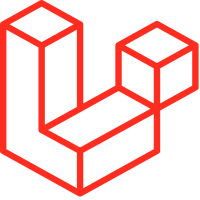
Laravel - Application Structure
The application structure in Laravel is basically the structure of folders, sub-folders and files included in a project.
📂 Main Folders of a Laravel Project
1. app/
This contains the core logic of your application (the heart of your business logic).
- Console/ → Custom Artisan commands.
- Exceptions/ → Application’s exception handling.
- Http/
- — Controllers/ → Handle incoming requests and return responses.
- — Middleware/ → Filters HTTP requests (before/after handling).
- — Requests/ → Form request validation logic.
- Models/ → Eloquent models for database interactions.
- Policies/ → Authorization logic.
- Providers/ → Service providers to bind services and configure app services.
- Events/ → Events represent actions that have occurred in your application.
- Listeners/ → Handle the events and execute logic when an event is fired.
- Jobs/ → Queued jobs for background tasks.
- Mail/ → Classes for sending emails (Mailable).
- Notifications/ → Classes for sending notifications (email, SMS, etc.).
- Rules/ → Custom validation rules.
2. bootstrap/
Contains files that initialize the framework.
- app.php → Initializes the Laravel framework.
- cache/ → Stores cached files for faster loading.
3. config/
Contains all the configuration files for your app (database, mail, etc.).
4. database/
Contains everything related to your database.
- migrations/ → Database schema migrations.
- factories/ → Model factories for seeding the database with sample data.
- seeders/ → Classes that populate the database with data.
5. public/
This is the web server's document root.
- index.php → The main entry point of the application.
- assets/ → Publicly accessible files such as images, CSS, and JS.
6. resources/
Contains assets that need to be processed or compiled.
- views/ → Blade templates (HTML).
- lang/ → Localization files (translations).
- js/ → JavaScript files (if using Laravel Mix).
- sass/ → SCSS files (if using Laravel Mix).
7. routes/
Defines your application’s route files.
- web.php → Routes for the web (browser-based).
- api.php → Routes for APIs (stateless).
- console.php → Artisan command-line routes.
- channels.php → Routes for broadcasting events.
8. storage/
Contains various types of file storage.
- app/ → Application-generated files.
- framework/ → Caches, session files, and compiled views.
- logs/ → Application log files.
9. tests/
Contains automated tests for your application.
- Feature/ → Tests for routes, controllers, etc.
- Unit/ → Unit tests for smaller, isolated functions.
10. vendor/
Contains all third-party dependencies managed by Composer.
– Do not modify this folder directly.
Key Files
- .env → Environment variables (app key, database credentials).
- composer.json → PHP dependencies and autoloading.
- artisan → Command line interface for Laravel.
- package.json → Node dependencies (frontend assets).
- webpack.mix.js → Laravel Mix config (frontend asset compilation).
In short:
app/= logicroutes/= URLsresources/= views/assetsconfig/= settingsdatabase/= databasepublic/= web rootstorage/= filestests/= tests
Root Folder
- helpers.php → Optional file for global helper functions (you can create it yourself).